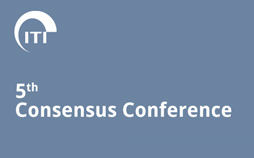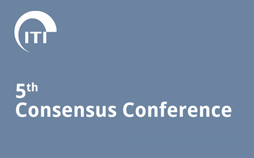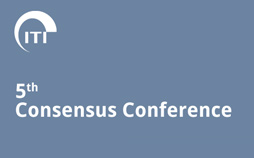
Soft Tissue Augmentation Procedures for Mucosal Defects in the Esthetic Zone
Consensus Statements
- The included studies consisted predominantly of case reports and case series of small numbers and short duration. The studies did not always identify the etiology and timing of the facial soft tissue recession around single implants.
- Periodontal soft tissue surgical procedures were applied to treat facial soft tissue recession. There is no consensus on how to treat a facial soft tissue defect in esthetic sites. In some of the papers, the implant restoration was removed and/or facially altered (crown, abutment, and/or implant) in order to facilitate the treatment.
- Limited improvement of the soft tissue (including increase in soft tissue thickness, keratinized tissue width, and facial marginal soft tissue level) can be achieved following soft tissue augmentation procedures.
- Following soft tissue augmentation procedures, complete resolution of the soft tissue defect ranged from 0% to 75% (3 studies; 32 patients).
Treatment Guidelines
A team approach and Esthetic Risk Assessment(1) should be utilized to improve predictability of an esthetic outcome and to reduce risk when managing soft tissue defects in the esthetic zone.
When soft tissue recession is found around a single-tooth implant, the clinician needs to diagnose the etiology based on evaluation of 3D implant position, restoration, existing hard and soft tissue support, as well as factitious (self-inflicted) injury such as tooth brushing and flossing trauma.
The surgical procedures to correct soft tissue facial recession around a single implant are complex. A systematic assessment and treatment protocol are required. The assessment should include the following:
- Patient’s expectations
- Medical status
- Smoking habit
- Visibility of defect upon smiling
- Width of keratinized tissue remaining at the defect site
- Restoration contour
- Infection at the implant site
- Contributing patient-related factors
- 3D implant position
- Proximity of implant to adjacent teeth
- Interproximal radiographic bone loss
- Scarring of soft tissue at implant site
When the above-mentioned factors are favorable, hard and/or soft tissue augmentation procedures can be effective. The patient should be made aware of the high variability of the outcome. When the abovementioned factors are unfavorable, hard and/or soft tissue augmentation procedures are less effective. Restorative modifications (abutment/crown replacement and/or reshaping) combined with a surgical approach may be indicated. Implant removal should also be considered as an option. When an implant needs to be removed, techniques that minimize bone loss are preferred. Specialized implant removal kits are available and preferred to trephines.
References:
(1) Martin WC, Morton D, Buser D. Diagnostic factors for esthetic risk assessment. In: Buser D, Belser U, Wismeijer D (eds). ITI Treatment Guide Vol 1: Implant Therapy In The Esthetic Zone - Single-Tooth Replacements. Berlin: Quintessence, 2007:11–20.
Treatment Guidelines
Downloads and References
Related items
Share this page
Download the QR code with a link to this page and use it in your presentations or share it on social media.
Download QR code

